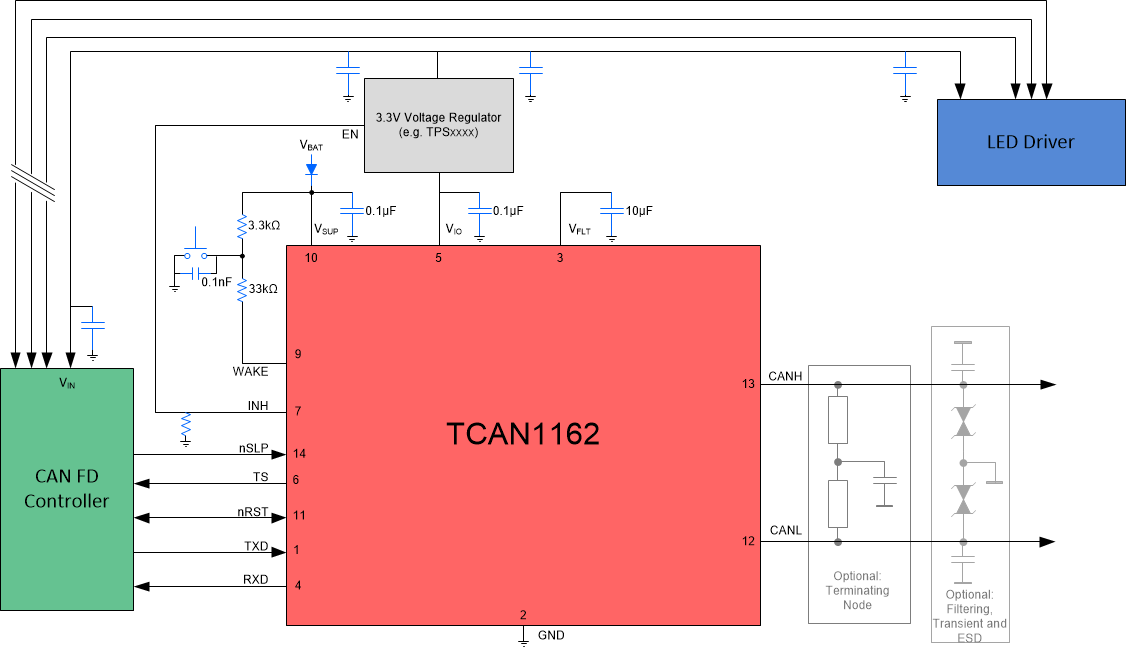SLLSF31A May 2021 – December 2021 TCAN1162-Q1
PRODUCTION DATA
- 1 Features
- 2 Applications
- 3 Description
- 4 Revision History
- 5 Description (continued)
- 6 Pin Configurations and Functions
- 7 Specifications
- 8 Parameter Measurement Information
-
9 Detailed Description
- 9.1 Overview
- 9.2 Functional Block Diagram
- 9.3 Feature Description
- 9.4 Device Functional Modes
- 10Application Information
- 11Power Supply Requirements
- 12Layout
- 13Device and Documentation Support
- 14Mechanical, Packaging, and Orderable Information
Package Options
Mechanical Data (Package|Pins)
- DMT|14
Thermal pad, mechanical data (Package|Pins)
- DMT|14
Orderable Information
3 Description
The TCAN1162-Q1 is a high-speed Controller Area Network (CAN) transceiver that meets the physical layer requirements of the ISO 11898-2:2016 high-speed CAN specification. The TCAN1162-Q1 supports both classical CAN and CAN FD networks up to 8 megabits per second (Mbps).
The TCAN1162-Q1 integrates a 5-V LDO with a wide input operating range which provides the CAN transceiver voltage thereby eliminating the need for the 5-V supply to be supplied from an external voltage source.
The TCAN1162-Q1 allows for system-level reductions in battery current consumption by selectively enabling the various power supplies that may be present on a system via the INH output pin. This allows an ultra-low-current sleep state where power is gated to all system components except for the TCAN1162-Q1, while monitoring the CAN bus. When a wake-up event is detected, the TCAN1162-Q1 initiates system start-up by driving INH high.
| PART NUMBER | PACKAGE(1) | BODY SIZE (NOM) |
|---|---|---|
| TCAN1162-Q1 | VSON (14) | 4.5 mm x 3.00 mm |
 Simplified Schematic
Simplified Schematic